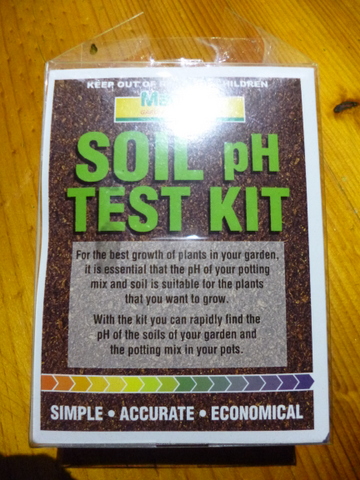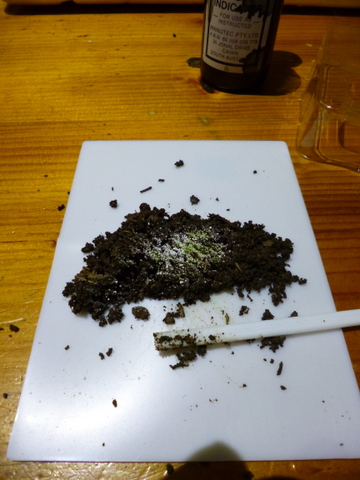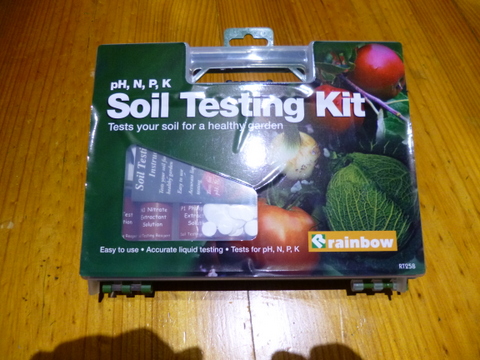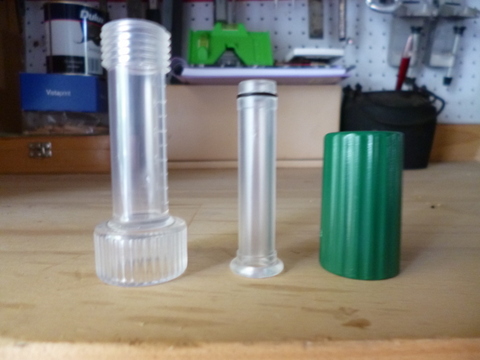When it comes to the chemical aspects of your soil which you can test yourself, it usually boils down to three facets, pH, soil nutrients, particularly the major nutrients nitrogen, phosphorous and potassium (NPK) and salinity.
pH
The pH of the soil refers to how acid or alkaline the soil is, which can have a significant impact on plant nutrient uptake and subsequently plant health. While pH has been discussed elsewhere (What is it and why is it important?; how do you measure it?; how do you change it?) there is a fairly simple qualitative test that you can use with stuff you probably have hanging around your house –
Acidity test – put a dessert spoon of the soil you wish to test into a cup. Add ¼ cup of water then sprinkle over some sodium bicarbonate (baking soda) and mix in. If you get bubbles, ie the sample fizzes, your soil is quite acid.
Alkalinity test – put a dessert spoon of soil into a cup then add a dessert spoon of vinegar and mix. Again, if you get fizzing then your soil is alkaline.
This is a pretty simple test which you can do quickly, cheaply and easily but it does not give you a number so to be really sure of what pH you soil is, it is best to pick up a soil test kit and use that.
Soil Nutrients
There is no simple home developed test for NPK but there is a test kit you can get which will allow you to test for these nutrients as well as pH. The process is similar for all the tests and involves taking a soil sample of 1-2 grams then place into a plastic tube (part of the kit) and add a similar amount of water. Filtering the solution by forcing an inner tube inside the outer tube so that a soil solution is forced through a replaceable filter on the bottom of the inner tube. Into the filtered solution is then added a measured amount of chemical reagent(s) and the solution left to develop a colour or level of opacity which is then read against a chart supplied with the kit.
While not providing a number as such, it does give you a readout against a scale from “very low” to “very high”. It is easy to see, once all the tests are done, if you have a nutrient imbalance and get a general idea of the nutrient status of the soil for the macronutrients at least.
There are soil nitrate meters available which can give you a direct readout of your soils’ nitrate content in the same way a pH meter gives you a direct reading of soil pH but they are expensive. They cost hundreds dollars (up to $600)and they require regular calibration using a calibrating solution which has to be bought as well. The other alternative is to submit samples to a soil testing laboratory who can not only conduct a battery of tests but also provide a report to help you interpret the results of the tests.
If it is clear that there is a nutrient lack or imbalance, information on recovering the situation is available here.
Salinity
The term soil salinity refers to how much salt is present in the soil and this is one of those cases where the less there is, the better it is for the plants. Salt in the soil results in loss of soil structure, loss of soil porosity, reduced water and air movement through the soil, reduced ability by the plants to take up water and nutrients.
Salinity is usually tested using a soil conductivity meter, the principle being that the greater the salt level the greater the conductivity of a soil solution. These meters cost from $200 up to over $1000 so unless you are really enthusiastic the cost may be a problem. Even low cost meters can have other functions though such as being able to read pH as well. In general terms, to use a salinity meter requires you to take a soil sample, dry it, mix a measured amount of soil with a measured amount of distilled water and take reading. The reading must them be multiplied by a factor taking into account the type of soil being measured which converts the result into a number which can be compared against a scale to enable the result to be interpreted.
There is another way to check if you have a salt problem, by looking at what is happening with the veggies you are growing. Salt levels that are high enough to cause a problem generally manifest themselves in one or more of the following symptoms –
- sudden wilting,
- stunted growth,
- marginal burn on leaves (especially lower, older leaves),
- leaf yellowing,
- unusual leaf fall,
- dead roots,
- restricted root development,
- sudden or gradual death of plants
Two factors that may modify a plant’s reaction to salty soil are high rainfall, which washes the salt downward in the soil profile out of the root zone and high temperatures and low humidity which dry the soil out, concentrating the salt and making its effects worse.
Response of all veggies to a given salt level is not the same, some are tolerant and some are less so, see the list below –
Salt Sensitive Vegetables
Beans, carrot, onions, parsnips, peas
Moderately Salt Sensitive Vegetables
Broccoli, brussel sprouts, cabbage, capsicum, cauliflower, celery, cucumber, eggplant, lettuce, potato, pumpkin, radish, spinach, sweet corn, sweet potato, tomato, turnip, watermelon
Moderately Salt Tolerant Vegetables
Beetroot, button squash, zucchini
Salt Tolerant Vegetables
Asparagus
If you are getting the plant symptoms mentioned above it could be worthwhile looking at the types of veggies most affected, which could give you an indication of how bad your salt problem is, ie the more salt tolerant the plant affected, the bigger the problem. The good news is that if your beans, carrots and onions etc are not showing any salt contamination symptoms, salinity is not a problem in your veggie garden.
Salinity Remediation
If salinity does turn out to be a problem for you, there are techniques which can be used to reduce the concentration of salt in affected soils. Working the soil to a depth of 50 to 100mm and then adding calcium (eg calcium sulphate also called gypsum) will displace the sodium in the soil profile, improving soil structure and reducing plant difficulties. This will take some time and it is really handy to have a soil conductivity meter to be able to keep track of how the process is going and the amount of gypsum required can be worked out from the soil conductivity. Well rotted manure can also be used as a substitute for gypsum if it is available.
Read about soil sampling and physcial aspects of soil testing







